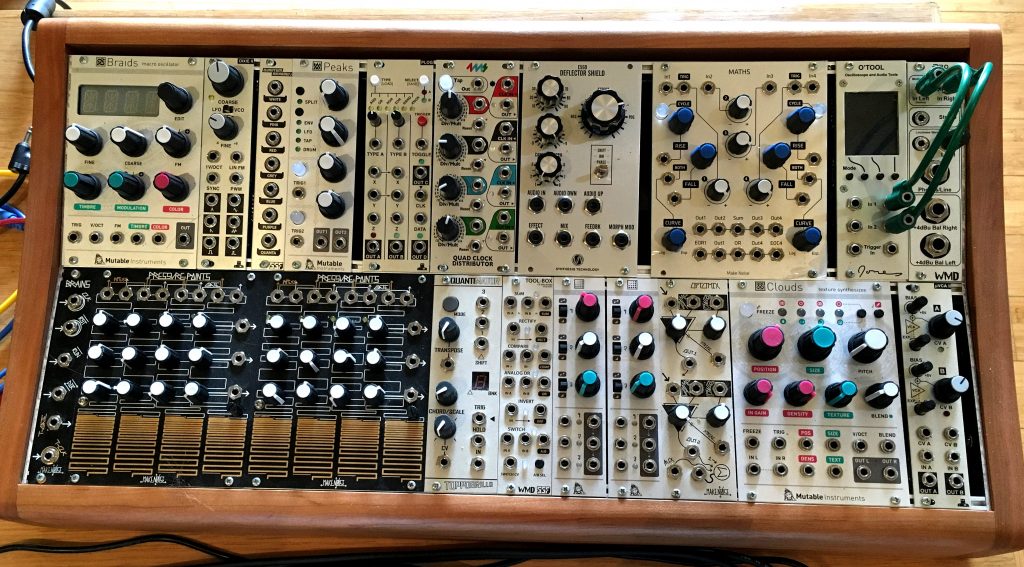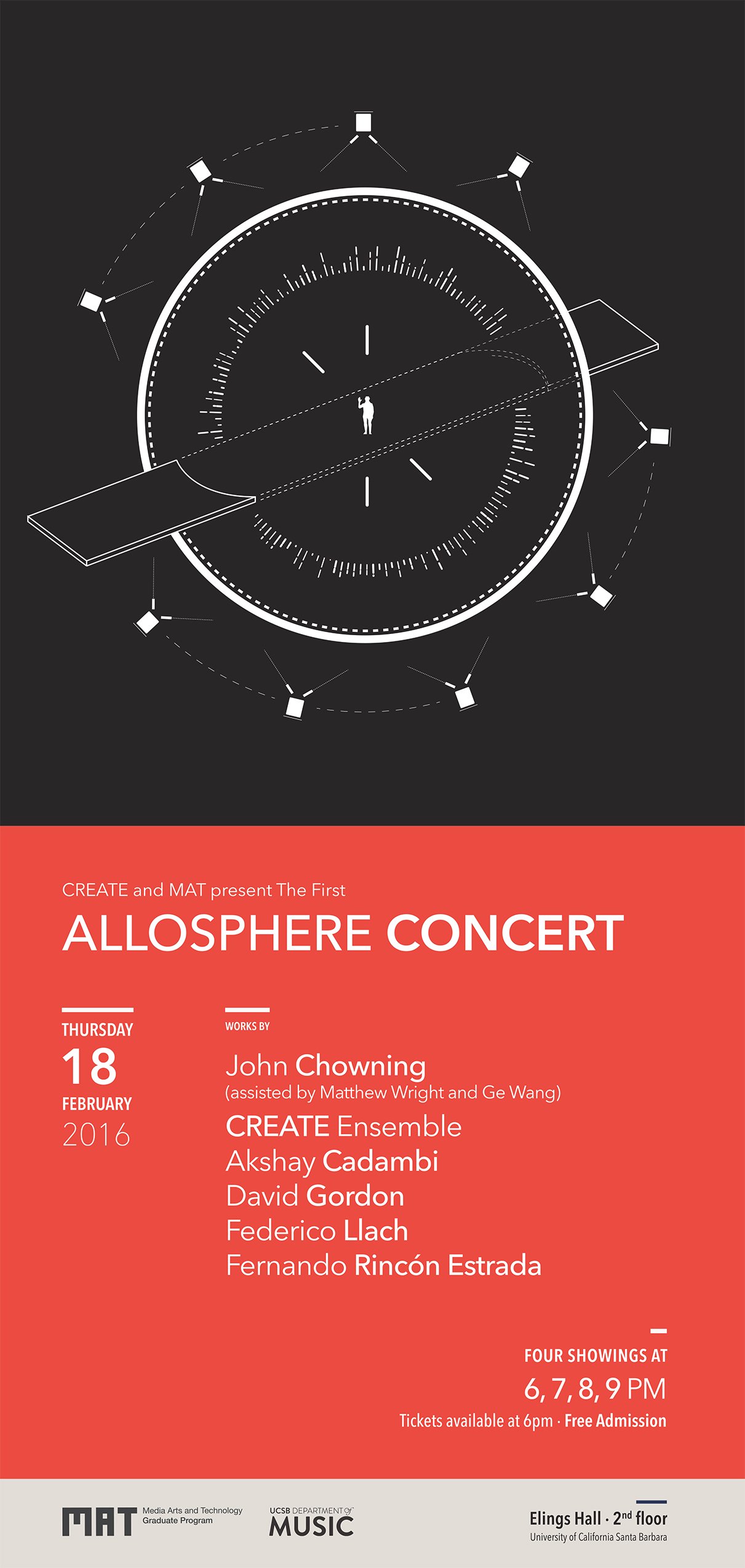Caffeine
Caffeine is a multichannel electroacoustic composition composed for the Allosphere.
The Allosphere is one-of-a-kind virtual environment and immersive instrument which supports full-surround 3D audio and spatialization consisting of a 54.1 channel Meyer sound system arranged in 3 rings (azimuth, above and below), in an nearly-anechoic chamber. It also supports full 360 immersive 3D visuals.
I spent the summer of 2015 doing an internship in San Francisco, during which I used to commute every day from Berkeley to San Francsisco on a subway train called the Bay Area Rapid Transport (BART). The loudest part of the journey was when the train takes the underwater tunnel across the bay between Oakland to San Francisco. This piece was largely inspired by that soundscape; the sounds of in a large, fast locomotive shifting, creeking as it reverberates a unique human-made acoustic space, the underwater trans-bay tunnel.
The piece can be split into two sections. The first goes through the distinct bouts of confusion, shifting focus, and haphazard urgency as I get myself ready to catch the train (I am not an early riser). The second section slow and deliberate revelation of the train’s soundscape.
Source Material:
- CalTrain track-on-wheel sounds
- BART train announcements in San Francisco, CA
- voice recordings of my friend saying coffee (with a New York accent)
- sounds of the shower
- sounds of me brushing my teeth
- drip coffee maker
Other sounds were obtained from the modular synthesizer at Studio Varèse. Some modules used were Echophon, Phonogene, Piston Honda, Clouds, and Deflector Shield.
The noisy drone-like section was created by feeding the Echoes from Echophon back into the input of the Phonogene thus driving its input amplifier into distortion. Then this sound was further sculpted by the other modules.
Mixing for 54.1:
Tape techniques like splicing, varispeed, and reversal were used, but were reimagined for a multichannel sound system. This was done by treating a multichannel mix as if it were an "N-track tape", resulting in highly coherent and complex spatial textures without using object-based techniques.
This piece was to be shown in the Allosphere's 54.1 system, but was mixed entirely in Studio Varèse at UCSB, where only an 8-channel speaker ring was available. Therefore, it was approached as three 8-channel rings, each ring mixed separately and then finally remapped onto the Allosphere's 54.1 channel system as three interlocking rings on the sphere. This turned out to be a good strategy for dealing with the large number of speakers in the Allosphere while still being able to do last minute tweaks in the DAW.
Additionally, a custom effect that I call Spatial Echo[1] was used. Using cascaded delay lines, a sound and each successive echo were spatialized such that the echoes trace a path. The resulting spatial-sound-texture could be controlled by changing either the temporal overlap or the spatial distance between each successive echo. This, when combined with the multichannel tape-like effects, proved to be effective for producing movement in the soundscape.





Mixed at Studio Varèse, UCSB during Sept 2015 – Feb 2016.
Exhibited on Feb 14, 2015 in the first ever Allosphere Concert at UCSB.
Listen on: SoundCloud (this is a stereo remix)
[1] The idea behind "Spatial Echo" was expanded upon in my master's thesis under the names "Echo Delay" and "Echo Shift" (Appendix sections A3 and A4 respectively).